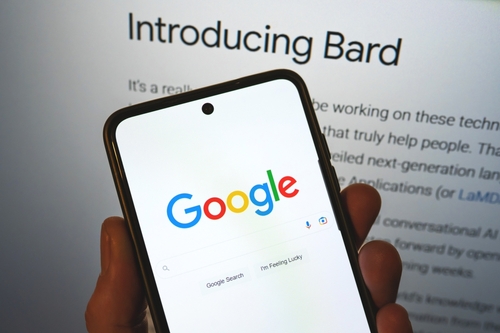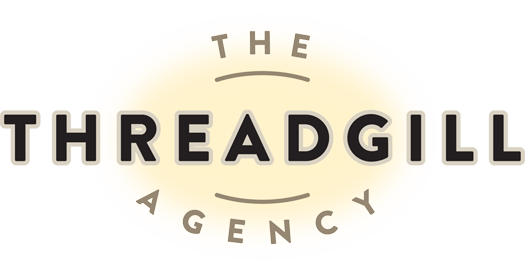
28 Mar Bard: Can Google’s New AI Chat Platform Boost Your Marketing?
Meet Bard, the new artificial intelligence (AI) chat tool introduced by Google in February, which began its user-testing phase just this week. The AI chatbot field is getting more crowded with the popularity of OpenAI’s ChatGPT last fall (reaching 1 million users in a week) and Microsoft’s AI-enhanced Bing search engine released last month.
The goal of these platforms is to generate conversational, humanlike responses to user prompts and inquiries. Reactions range from fear over the death of original, accurate content to excited anticipation of this virtual time-saving assistant. Insiders like David Pierce at The Verge say these chat tools serve as “co-conspirator and idea machine, rather than a question-and-answer bot.”
Google itself says AI gives users the opportunity to “deepen our understanding of information and turn it into useful knowledge more efficiently — making it easier for people to get to the heart of what they’re looking for and get things done.”
Ease and efficiency sound great! But what do AI chat platforms mean for everyday users — and in the world of digital marketing? Can they be trusted? What are the benefits and concerns of machine learning and content creation?
Keep reading for how Google’s Bard differs from other platforms and the pros and cons of using AI in your marketing strategy.
Bard vs. ChatGPT
Similarities between Bard and ChatGPT may appear insignificant to the common user but include:
- They both use AI and machine learning by large language model algorithms to recognize text, predict it, summarize it, and generate responses based on massive amounts of data.
- They (typically) output conversational, natural-sounding responses.
- They serve as idea and content generators but are not considered search engines. (AI-powered Microsoft Bing Chat differs slightly here, in that it is a search engine combined with chat on the Edge browser. Bing Chat is actually supported by OpenAI’s new GPT language model.)
- Neither is currently integrated into a search engine.
- Neither currently provides citation source links or footnotes to check for accuracy.
- Both face concerns from users about inaccurate or biased information and confusing or over-simplified responses.
- Both provide warnings of their limitations with language like “May occasionally generate inaccurate (or biased, incomplete, or inappropriate) information.”
Bard and ChatGPT have differences, as well:
- They are powered by different language models. Bing uses a slimmed-down version of Google’s Language Model for Dialogue Applications (LaMDA) for faster use, while ChatGPT and Bing use GPT language models.
- Bard can draw from current web content, which is more up-to-date than ChatGPT’s data input up to 2021.
- Bard offers three “drafts” to one inquiry, providing the user options.
- Both offer ongoing question-and-answer inquiries, but Bard limits the number of back-and-forths on a single topic (that limit is in the single digits, though the number isn’t expressly publicized). For now, Bard offers an unlimited number of daily chats, while ChatGPT just raised its limit to 60 questions a day.
- Bard provides a “Google It” button to prompt users to fact-check for accuracy.
For more, read The Threadgill Agency’s in-depth article on ChatGPT published recently.
Using Chatbots in Marketing & Life
Practically speaking, can chatbots serve you and your marketing plan? Yes! Some examples include:
- Write a sales email for new eyeglasses.
- Suggest blog topics on current digital marketing trends.
- Write a blog post about the Dallas County real estate market.
- Name the top 5 reasons to attend community college.
- Generate 10 headlines on your article topic, then choose the best one.
- Outline a podcast episode on trends for your specific industry.
For personal use, utilize AI’s data-collecting wizardry for crowdsourcing like this:
- What should I pack for Paris in April?
- How do I save time on cleaning my house?
- What are the best movies from the 1980s?
- What is the best, used family car to buy in today’s market?
- Write a poem about springtime. Print it out, frame it, and feel inspired.
For your marketing team, the potential benefits of using Bard and other AI are clear: idea creation and inspiration, deeper insights than those provided by a quick web search, and time-saving first drafts that spur creativity and personalization.
“Bard is really here to help people boost their imagination and their productivity,” offers Sissie Hsiao, a VP of product at Google and one of the Bard leads. And experts at HubSpot add that today’s innovations serve as “an exciting glimpse into the potential future of AI: A future where marketers can spend less time on menial tasks, and more time strategizing, creating high-impact content, and engaging directly with prospects and customers.”
The Social Media Examiner offers these tips for using Bard and other AI-powered chats:
- Start with a general topic and allow the prompts to help you narrow it down.
- To generate the desired tone, name the target audience or reading level.
- Be casual in your prompt if you want casual-sounding responses.
- Beyond the audience, give details of the purpose of content so the bot can identify context and provide the style you want (blog post, email, social media ad, commercial, etc.).
- Ask for suggested social content, like GIFs or emojis. They won’t create them for you but will offer specifics on what to look for (or create yourself).
“The most important failsafe to using Bard and other AI tools is building trust with your audience,” adds Mat Threadgill. “You have to maintain your credibility and connection with the customers you know best.”
In order to do so, while using chatbot tools, always: 1) Check for accuracy and track down sources, 2) Rework content to infuse your company’s voice and perspective, and 3) Personalize for your audience with user-generated content, behind-the-scenes glimpses, and company-specific data and points of interest.
Give Bard a Test Drive
Bard is in the experimental phase, meaning a limited number of beta users are testing it and providing feedback to Google. For now, it’s limited to U.S. and U.K. users who have a Google account (fast-tracked for Google Pixel Superfans). The good news? As of March 21, 2023, the Bard waitlist is open to the public, and some report getting access within hours or days.
These AI tools are free for now, so it’s easy to start including them in your marketing strategy. See if they help spur the creative process and free up time to create better content. Don’t forget to call on The Threadgill Agency to help strategize and measure your results.
